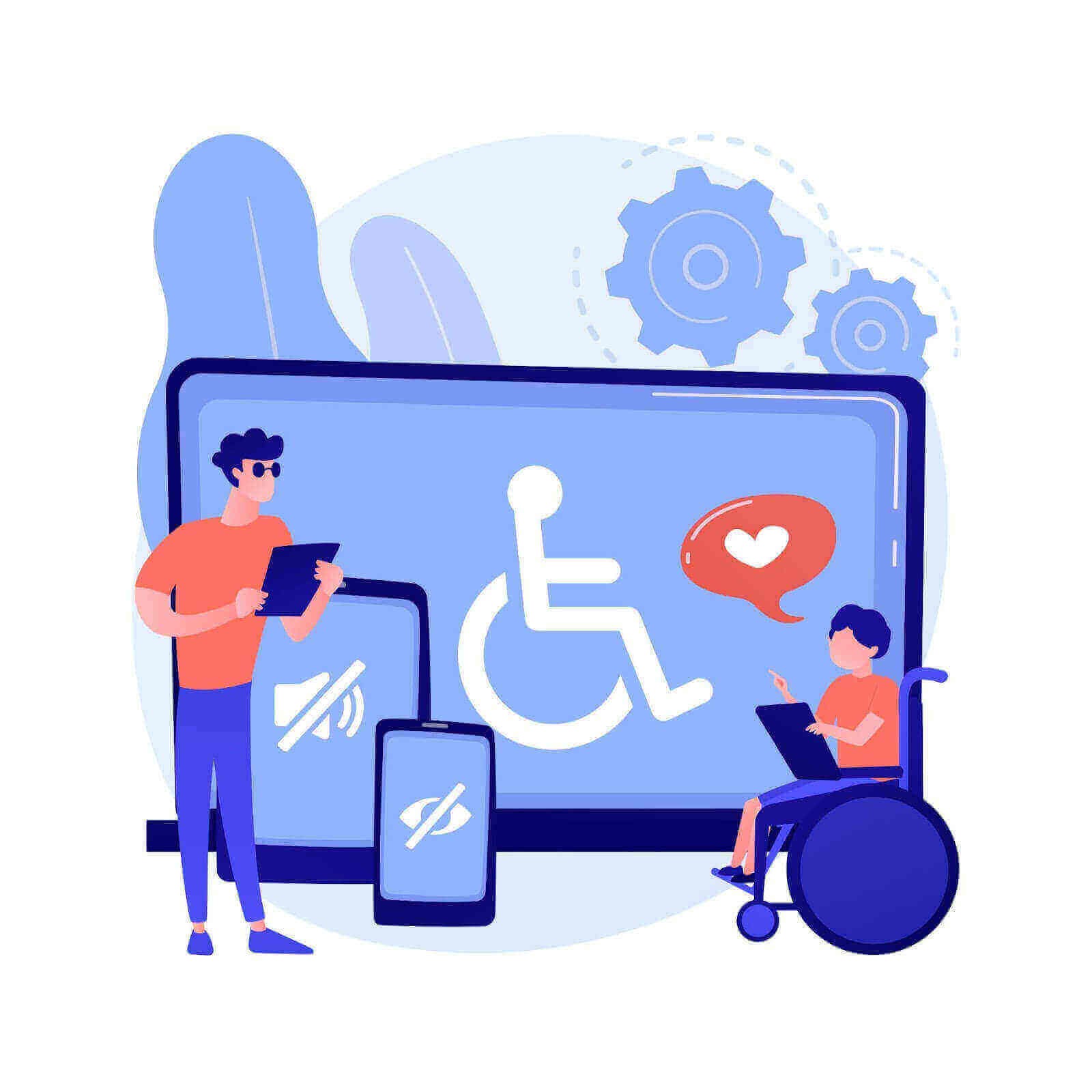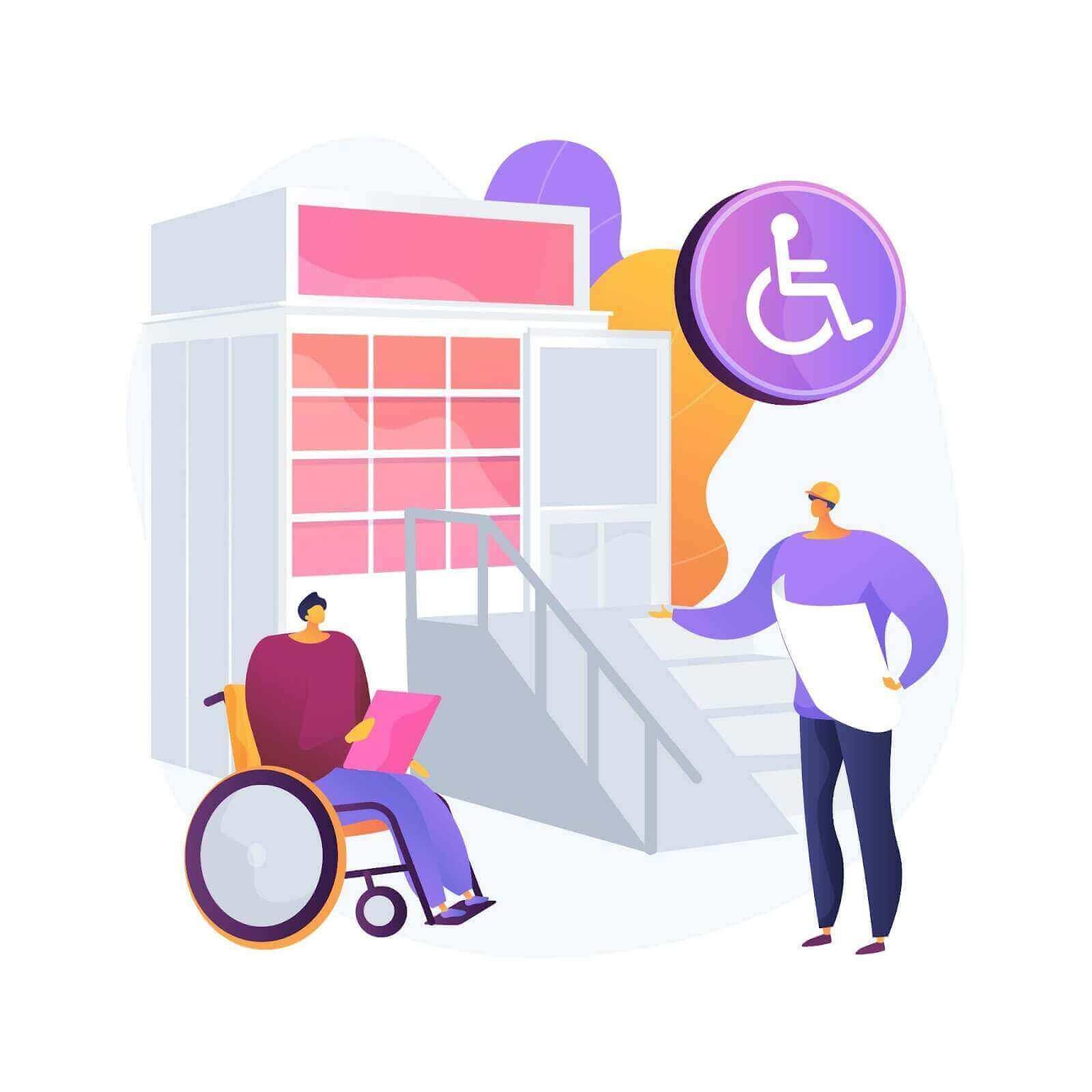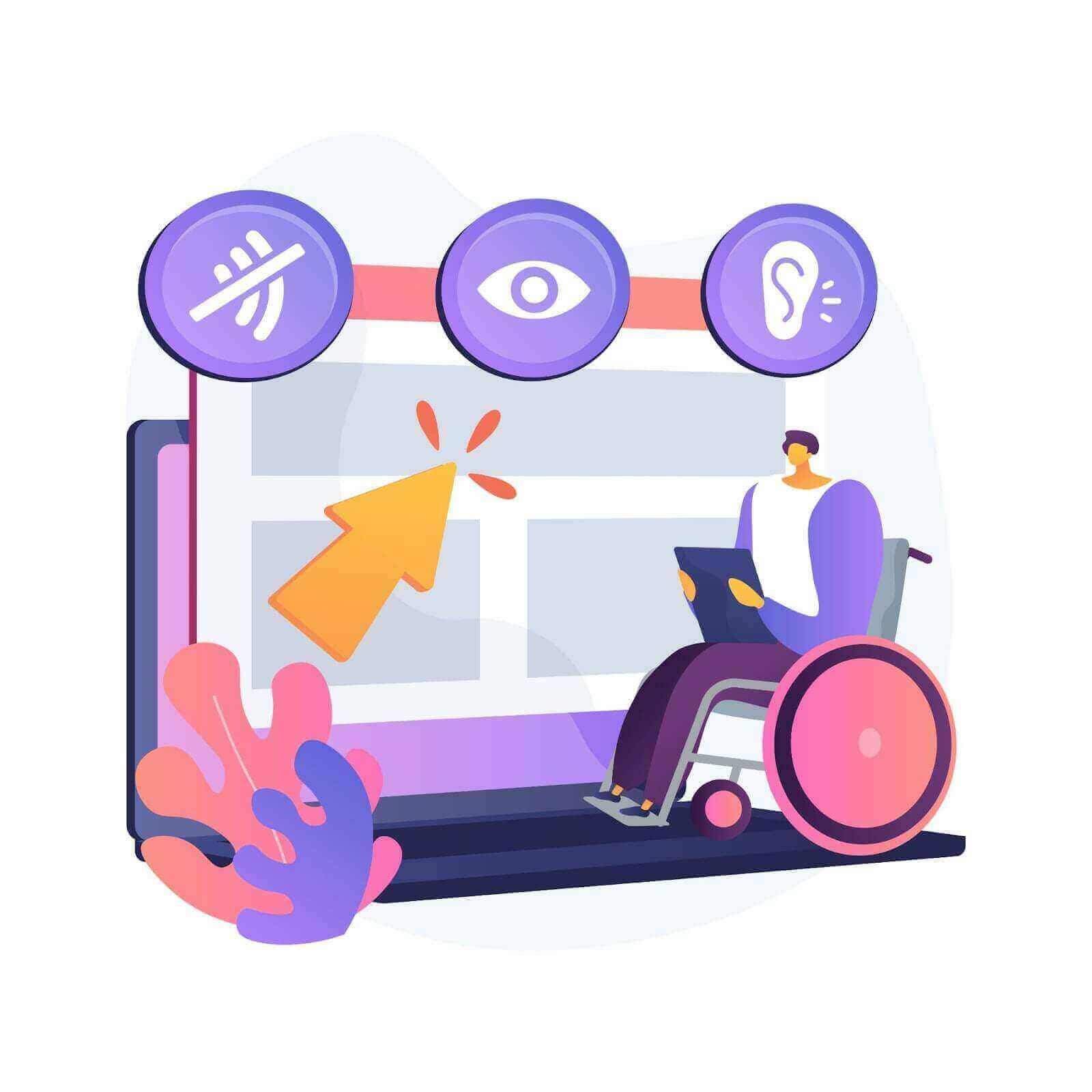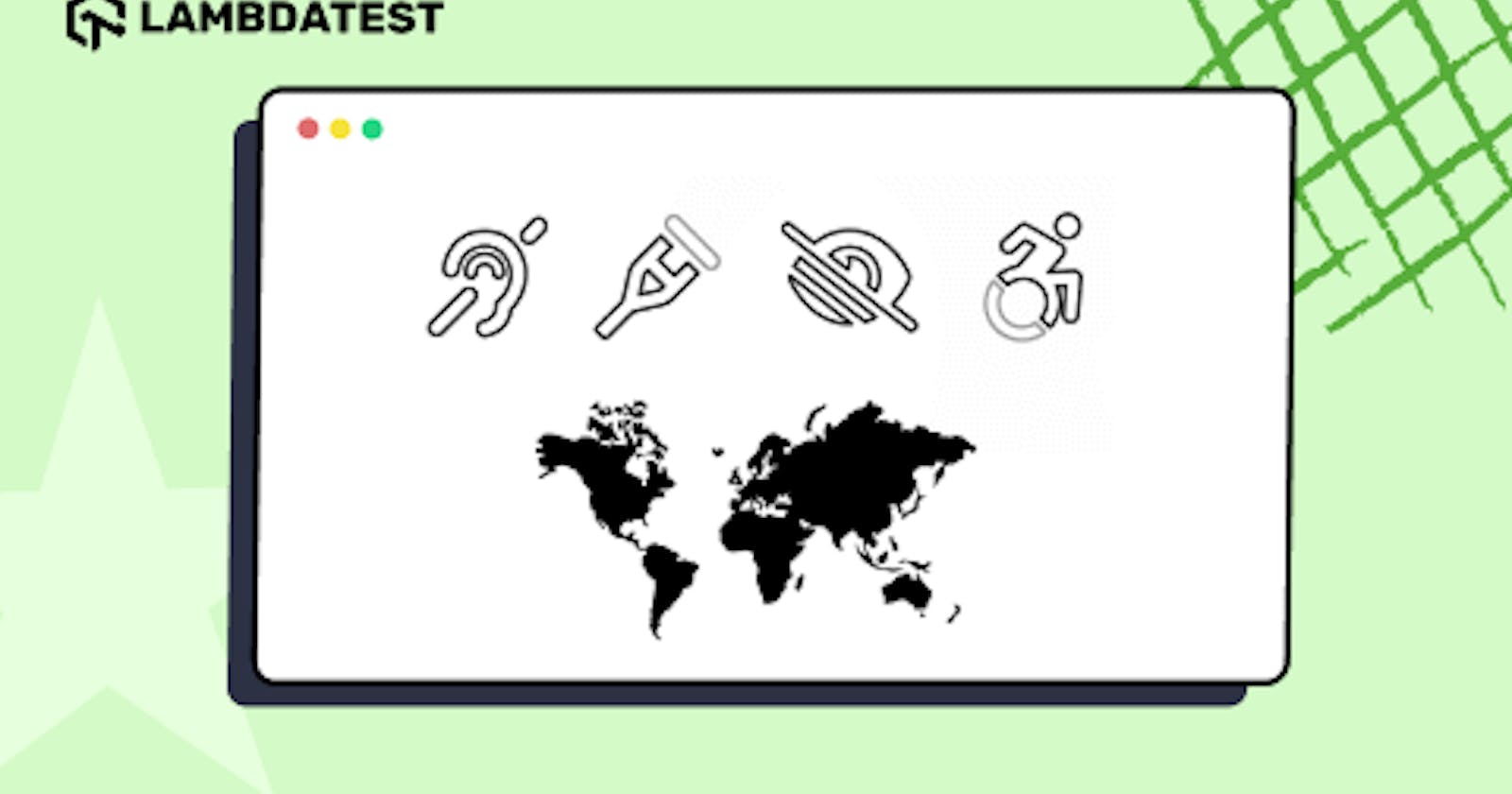Global Accessibility Awareness Day: What You Should Know About It and Why It Matters
Table of contents
- Introduction
- Understanding Accessibility
- Definition of accessibility
- Types of Impairments and how they impact accessibility needs
- Benefits of Making Your Product or Website More Accessible
- How accessibility benefits individuals with Impairments
- How accessibility benefits businesses and organizations
- Common Challenges faced when implementing Accessibility Measures
- Strategies for Overcoming the Challenges Faced
- Best Practices for Accessibility
- Tips for making websites and digital content accessible
- Businesses and organizations to prioritize accessibility
- Conclusion
Introduction
Hello everyone, we are writing this blog to share the importance of Global Accessibility Awareness Day (GAAD), celebrated on the third Thursday of every May. And this year we are celebrating on May 18th. The main reason behind this celebration is to increase awareness of the importance of global accessibility and to improve the digital experience for all. Through this, let’s spread information and encourage discussion about digital accessibility and inclusion, to create long-term improvements in the lives of people with disabilities. It also aims to highlight why digital accessibility and inclusion are essential and how technologies like assistive technologies, can be used to help people with disabilities. Global accessibility for individuals with disabilities is extremely important for these individuals to access the same opportunities offered to their peers.
We hope you will enjoy reading this and sharing it with others.
Perform manual or automated cross browser test on 3000+ browsers online. Deploy and scale faster with the most powerful cross browser testing tool online.
Understanding Accessibility
Definition of accessibility
Accessibility is the degree to which something is accessible to all members of society, regardless of physical or mental abilities. It refers to the design of products, devices, services, or environments for people who experience disabilities. It implies that people with disabilities can access websites, products, and services that enable them to make their voices heard; participate in decision-making, and build meaningful relationships with peers, colleagues, and others. Designing accessible technology requires considering a wide range of disabilities, including physical, sensory, cognitive, and neurological impairments. People with disabilities may engage more in society by producing accessible and usable goods, digital environments, and services.
The World Health Organization estimates that approximately 1.3 billion people, or 16% of the world’s population, are living with some form of impairments. According to the U.N. Environment Programme (UNEP), the number of differently-abled people globally is increasing due to population growth, aging, and changes associated with urbanization and industrialization.
Source: WHO, updated as of March 2023
Types of Impairments and how they impact accessibility needs

Speech/Language Impairment: Speech/language impairments affect an individual’s ability to communicate, comprehend and use language in social, academic, and vocational situations. It can range from moderate speech difficulties to full mutism. People with this sort of impairment may find it difficult to follow instructions, understand and answer inquiries, and communicate socially with peers and others. To accommodate this , it is critical to utilize clear, easy-to-understand language and to present information in several formats (for example, vocal, written, and visual). Assistive technology such as text-to-speech and voice recognition can help these people communicate.
Mobility Impairment: Mobility impairments can range from difficulty with fine motor skills (such as writing and holding objects) to severe physical impairments that severely limit an individual’s ability to move through their environment. Individuals with mobility disabilities may need assistance with daily tasks and mobility aids, such as wheelchairs, for assistance. Physical accommodations, such as wheelchair ramps and wide entrances, should be made to accommodate these folks’ accessibility needs, and access to technology (e.g., speech recognition software), should be offered to enable autonomous access to activities.
Visual Impairment: Cataracts, glaucoma, macular degeneration, and color blindness are all examples of visual impairment. This might range from a minor loss of eyesight to total blindness. This sort of impairment impairs a person’s ability to see well and can limit their access to information and resources significantly. It is essential to provide visual support, such as extensive print materials, Braille materials, and audio recordings, to accommodate this type of handicap so that the individual can access and comprehend information independently.
Hearing Impairment: Hearing problems range from difficulties hearing specific frequencies to total deafness. This sort of impairment can make it difficult for a person to engage in discussions, grasp instructions, and even avoid potentially hazardous circumstances. To address this sort of impairment, the individual should have access to assistive listening equipment, sign language interpreters, and captioning services.
Cognitive Impairment: Cognitive impairments range in severity from mild to severe. People who have dyslexia will be under this category. Individuals’ requirements should be analyzed to find the most appropriate assistive technology that suits their cognitive demands because these impairments can make it difficult to comprehend information. A person with cognitive impairment may require special training to operate the technology effectively.
Learning Impairment: Learning difficulties differ from person to person and can create problems with comprehension, writing, mathematics, and other areas of learning. Tasks may need to be broken down into smaller lessons, and learners may require more time on assignments or examinations, as well as access to assistive technology that can aid in learning.
Source: University Information Technology Services
Benefits of Making Your Product or Website More Accessible

Better accessibility helps individuals who are differently-abled and larger communities like businesses and organizations.
Test native, hybrid, and web apps on any mobile OS with our free online Android emulator . Sign up to optimize app performance.
How accessibility benefits individuals with Impairments
Investing in accessibility is worth it because it is beneficial to the individual with disabilities in many ways.
Accessibility provides individuals with disabilities with the opportunity to participate in activities or use products independently.
It provides the same degree of access to websites, public conveyance, buildings, products, and services.
It can make digital information more accessible by offering assistive technology, eliminating obstacles, and giving alternate forms.
It expands career prospects for people with impairments, allows them to access additional educational resources, and improves access to healthcare services.
It also helps by reducing environmental obstacles and modifying rules, protocols, and procedures to create a more accommodating workplace for individuals of all abilities.
It gives people with disabilities a sense of inclusion and empowerment while increasing their quality of life.
How accessibility benefits businesses and organizations
Accessibility matters for businesses and organizations because it helps them to reach a broader consumer base.
Increased User Experience: Accessible websites are meant to be simple to browse for users of all abilities, making them more pleasurable to use and less likely to be abandoned by dissatisfied users.
Increased Reach: Making a website accessible assures visitors of various backgrounds, skills, and levels of knowledge may access the website’s content. Making your website accessible increases its potential reach to a far larger client base.
Improved SEO: When websites are made accessible, individuals with impairments find it easier to navigate and utilize them. This enhances the likelihood of that website ranking better in search engine rankings.
Improves Compliance: In many places throughout the world, ensuring web accessibility is a legal requirement. Making your website accessible entails adhering to current or prospective regulatory laws or standards, such as the Americans with Disabilities Act (ADA). This ensures that businesses are putting out the effort to create accessible websites since they cannot afford to face penalties and litigation.
Enriches User Experience: Web accessibility ensures that all users, including those with impairments, can use and navigate your website. Making the website accessible to all users improves their overall user experience. Inclusive policies improve the customer experience and encourage customers to return and interact with the company. This might help to the overall success of your company.
Earns Trust: Implementing accessibility increases the likelihood that potential visitors will trust your website or product. This is because you ensure all users have equitable access to your tools and services.
Cost savings: Making a website accessible from the get go removes the need for future upgrades. Businesses save a lot of money since they don’t have to conduct complicated retrofitting methods to make their websites accessible.
Common Challenges faced when implementing Accessibility Measures

Along with the benefits of accessibility, there are also challenges faced by businesses and organizations attempting to make their websites accessible to users with disabilities.
Cost: Implementing online accessibility measures and making digital resources available to everyone, regardless of ability, may be expensive. This might be due to the need to recruit accessibility specialists, obtain specific equipment for executing the measures, and change existing systems.
Lack of Knowledge and Resources: Lack of information about accessibility standards, rules, and technology, as well as a lack of resources to invest in accessibility, can be notable problems.
Limited Resources: Limited resources are available to those trying to implement accessibility measures for their organization. Organizations might find themselves competing for the same resources with other organizations that may have more funding and other advantages.
Lack of Awareness: Businesses and organizations may be unaware of the necessity of online accessibility or even that it exists. Even if they are aware, they may underestimate the importance of accessibility and its numerous benefits, leaving them unwilling to commit to making the required adjustments.
Misconceptions/Myths: Misconceptions regarding online accessibility, such as the idea that it is a burden or difficult to execute, might deter companies from committing to adopting accessibility measures.
Technological Limitations: Due to the existing limits of digital technology, some companies may struggle to discover effective methods to make their digital products and services accessible. Designers and engineers may not have access to a variety of assistive tools to ensure the accessibility of their work.
Legacy Systems: Because legacy systems are sometimes not built to accommodate accessibility, making current applications accessible can be difficult.
Strategies for Overcoming the Challenges Faced
Integrate accessibility into the design process: Consider accessibility requirements from the start of the design process, rather than as an afterthought.
Educate Others: Educating individuals in positions of authority about the necessity of accessibility and the means available to make it a reality is a critical step in overcoming opposition to change.
Invest in Resources: It is critical to invest time and resources in learning the needs of individuals with disabilities and determining the best methods to address them. Ensure that accessibility measures are incorporated into the development process from the beginning since this will save time and money in the long run.
Leverage Existing Resources: Using existing accessibility standards and resources will help you save time and money throughout the implementation process. Utilizing companies that specialize in connecting people with accessibility needs to those responsible for making the changes is one way to get the help needed.
Prioritization: Prioritization of efforts is critical in meeting accessibility needs. Prioritizing measures that will assist people with the most severe impairments first is frequently the best way to go.
Plan for testing: To verify that your product fulfills all standards, use specialized tools and approaches such as assistive technology and accessibility testing.
Test and Monitor: Testing and Monitoring the results of the implemented changes are important in ensuring that they meet the requirements of those affected. Establishing feedback and monitoring mechanisms can be extremely beneficial in making and evaluating changes.
Involve stakeholders: Involve stakeholders and illustrate the benefits of accessibility initiatives. Work to create an accessible culture in the organization and reward teams who show excellent practices.
Being an Advocate: Advocating for accessibility both inside and externally will assist to establish understanding and rally support for the adjustments. Collaboration with communities and organizations that promote accessibility can help spread the word and earn their support.
Best Practices for Accessibility

Tips for making websites and digital content accessible
Design with accessibility in mind: When developing websites and digital material, it is critical to include accessibility elements from the beginning. Ensure that goods are designed with accessibility requirements in mind and that all pictures, buttons, and text fields have adequate color contrast and are labeled appropriately. People with limited eyesight rely on high-contrast situations to help them see.
Make text legible: Use legible fonts such as Arial, Calibri, Tahoma, Times New Roman, and Helvetica, as well as adequate font size and color contrast between text and backdrop.
Refrain from using animations: People with cognitive difficulties may struggle to focus on a website with a lot of animation and movement.
Inclusive texts: Make sure to use inclusive texts and not to hurt someone using harsh clauses.
Use an organized page structure and descriptive headings: Make use of a well-organized page structure and informative headings. A well-organized page will make it easier for screen readers to comprehend it.
Provide text alternatives for non-text elements such as images, audio, and video: To convey the function or context of the non-text components, use alternative text.
Utilize keyboard commands: Individuals unable to operate a mouse should be provided with shortcuts and access keys. Using these shortcuts and access keys can assist visitors in swiftly and simply navigating the website.
Design with images in mind: Use alternative descriptive (alt text) to help those using screen readers access what’s pictured.
Provide transcripts: Make sure that all multimedia, such as audio and video, is transcribed for people with hearing impairments.
Test for accessibility: Conduct accessibility tests on websites and multimedia to verify they satisfy the most recent accessibility standards. This can help you identify any problems and allow you to fix them. And make sure to test regularly to ensure that you stay current.
Businesses and organizations to prioritize accessibility
Assess current accessibility needs: Examine what requirements your company or organization presently has to ensure that it fulfills accessibility standards.
Create an accessibility plan: Create an action plan with specific goals and objectives for establishing and increasing accessibility.
Train the Employees: Ensure that all employees understand the value of accessibility and how to assist persons with special needs.
Audit websites and other digital resources: Make sure your digital presences are up to par in terms of accessibility.
Provide alternative formats: Ensure that users have access to different documents, photos, and text.
Implement communication systems: Establish a clear and effective approach for communicating accessibility requirements to clients and stakeholders.
Set policies: Implement written policies that encourage and reinforce accessibility.
Review regulatory guidelines: Review accessibility-related legislation and regulations regularly.
Provide feedback channels: Allow clients and stakeholders to submit comments on the accessibility of your company or organization.
Educate customers: Raise accessibility awareness among your customers and communities around you.
Test native, hybrid, and web apps on any mobile OS with our free android online emulator . Sign up to optimize app performance.
Conclusion

Being differently-abled is a significant public health concern that must be addressed to ensure that all individuals, regardless of physical or mental abilities, have equal opportunities to live their lives to the fullest. Accessible content also ensures that persons with disabilities may engage fully in the digital era and purchase on the same platform as everyone else. It is high time to make the digital world accessible to everybody.
I believe that we all have some physical or mental limitations. We all go through so much in the hustling culture. So, why the disparity?
We can promote justice and equity in our society by making the world more accessible to people with disabilities ❤️ Let us take an oath and celebrate this GAAD by working together to make the world a better place for everybody.
